There's no doubt that Italian footwear experts Scarpa make excellent hiking boots, shoes and trainers.
Several of the brands models have become firm favourites of the team here at Live For The Outdoors and Trail magazine over the past decade or two, winning numerous Best In Test awards.
The Scarpa Manta Pro GTX has been named the best crampon-compatible mountaineering boot on more than one occasion, the Scarpa Spin Infinity is the current winner of our best ultra running shoe category, and the Scarpa Mescalito has consistently been a favourite for technical scrambling and ridge walking. Or, in other words, the brand clearly has a stellar reputation in our eyes.
But can the Scarpa Vortex XCR GTX live up to this standard?
Find the women's version here.
Pros
- Durable
- Supportive
- Waterproof
- Proven design
- Excellent Vibram outsole
Cons
- Too chunky
- Quite heavy
- Expensive
- Not the comfiest
| RRP: | £195 |
| Women’s sizes (UK): | 3.5-8 |
| Men’s sizes (UK): | 3.5-13 |
| Versions: | Men’s, women’s |
| Weight: | 443g / 15.6oz per shoe (men’s UK 8) |
It’s billed by the Italian brand as a “classic in the Scarpa range” and described as “tough and supportive” with “maximum comfort but the durability of a boot”.
It’s also pitched as a bit of a hybrid – it’s both an approach shoe and a walking shoe at the same time. As such, it hits a kind of halfway-house middle ground: it’s not as technical, precise or grippy as true scrambling shoes, such as the Scarpa Mescalito, but then again it’s better for bigger mileage than those shoes.
Similarly, it’s not as light, comfy or energetic as trainer-like walking shoes such as the Scarpa Rush 2 GTX, but it’s certainly more robust, long-lasting and protective than them.
Does this balancing act achieve the best of both worlds, or disappoint as a jack of all trades but master of none? This will all depend on your personal preferences. Do you favour a chunky, muscularly-built shoe or do you prefer an athletic, agile trainer? Is protection and durability important to you or is comfort and speed a higher priority?
As such, it’s my conclusion that the Scarpa Vortex XCR GTX will probably polarise opinion. Some will love the reliably protective, hefty build of the shoe and enjoy the versatile fusion of approach and walking shoe characteristics; others will find them way too heavy (443g per shoe), unwieldy and cumbersome, and lacking in comfort, cushioning, energy return and speed. Which side of the fence will you fall on?
My personal opinion? I think the Vortex XCR GTXs are a well-executed product, with a high quality of craftsmanship, good materials and impressive levels of performance. They feel very robust, durable, and supportive.
The excellent Vibram outsole unit is grippy, the Gore-Tex lining provides waterproof protection and the all-round build has the robustness and stiffness you need for real mountain use.
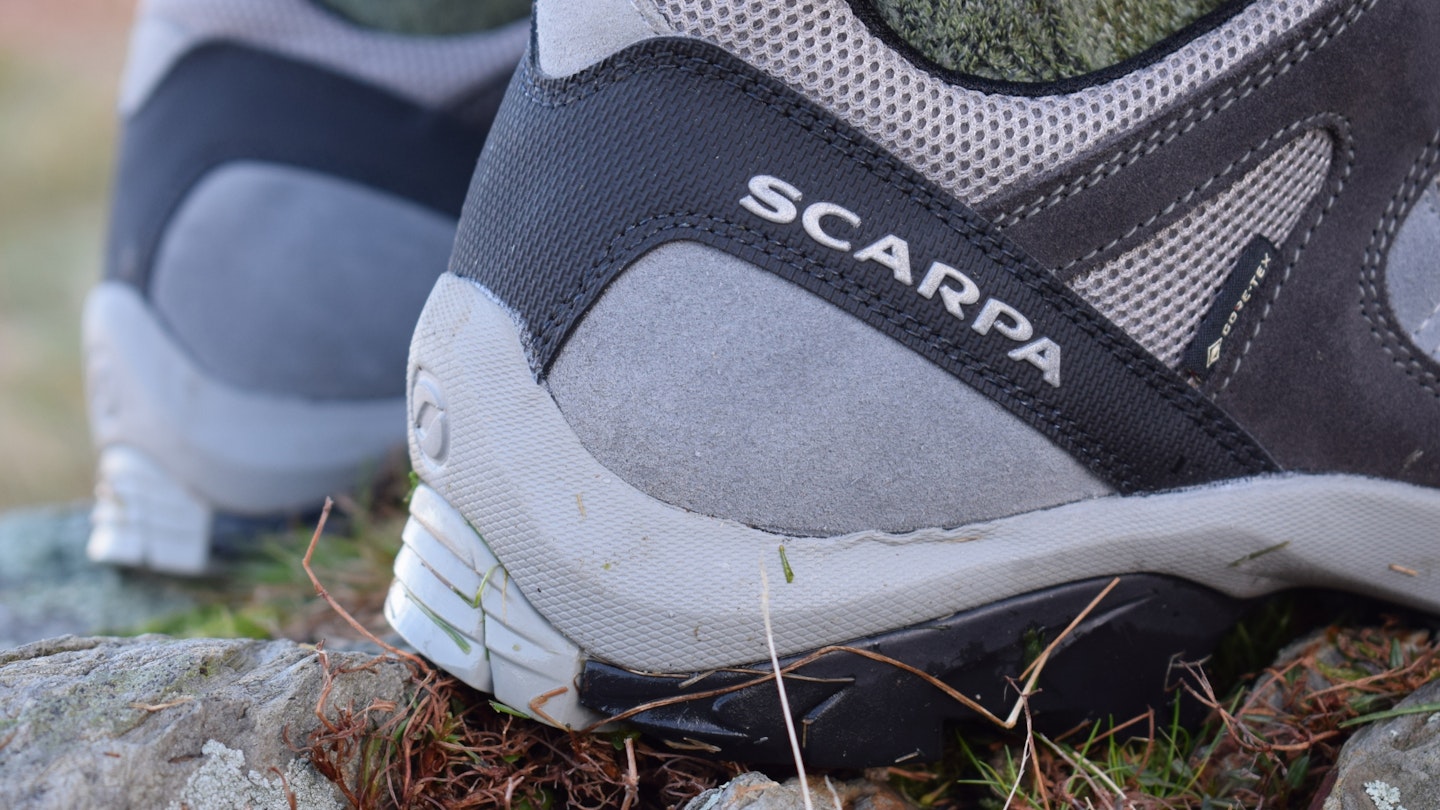
But would I choose to wear them? Not really. Personally I much prefer to hike in trail running trainers or lightweight walking shoes. I favour loads of cushioning, out-of-the-box comfort and a fast, agile, energetic feel to my shoes.
If I had access to the entire Scarpa range, I’d always choose to hike in the Spin Infinity, Ribelle Run 2 or Rush 2 every day of the week, rather than the Vortex XCR GTXs.
For me, I find the Vortex XCR GTXs too heavy, a tad too stiff and rigid, and not as comfy or cushioned as I like, and they did give me a bit of discomfort around my heels during initial test outings.
Yet all of this is just down to my personal, subjective preferences. Do I think they are bad pair of hiking shoes? Definitely not. Are they for me? No. But will other hillwalkers love them? Yes – I think for anyone who favours a substantial, supportive, well-protected shoe, the Scarpa Vortex XCR GTXs should prove a long-lasting, high-performing, good value investment.
Now, let's get into some more detail, shall we?
Upper
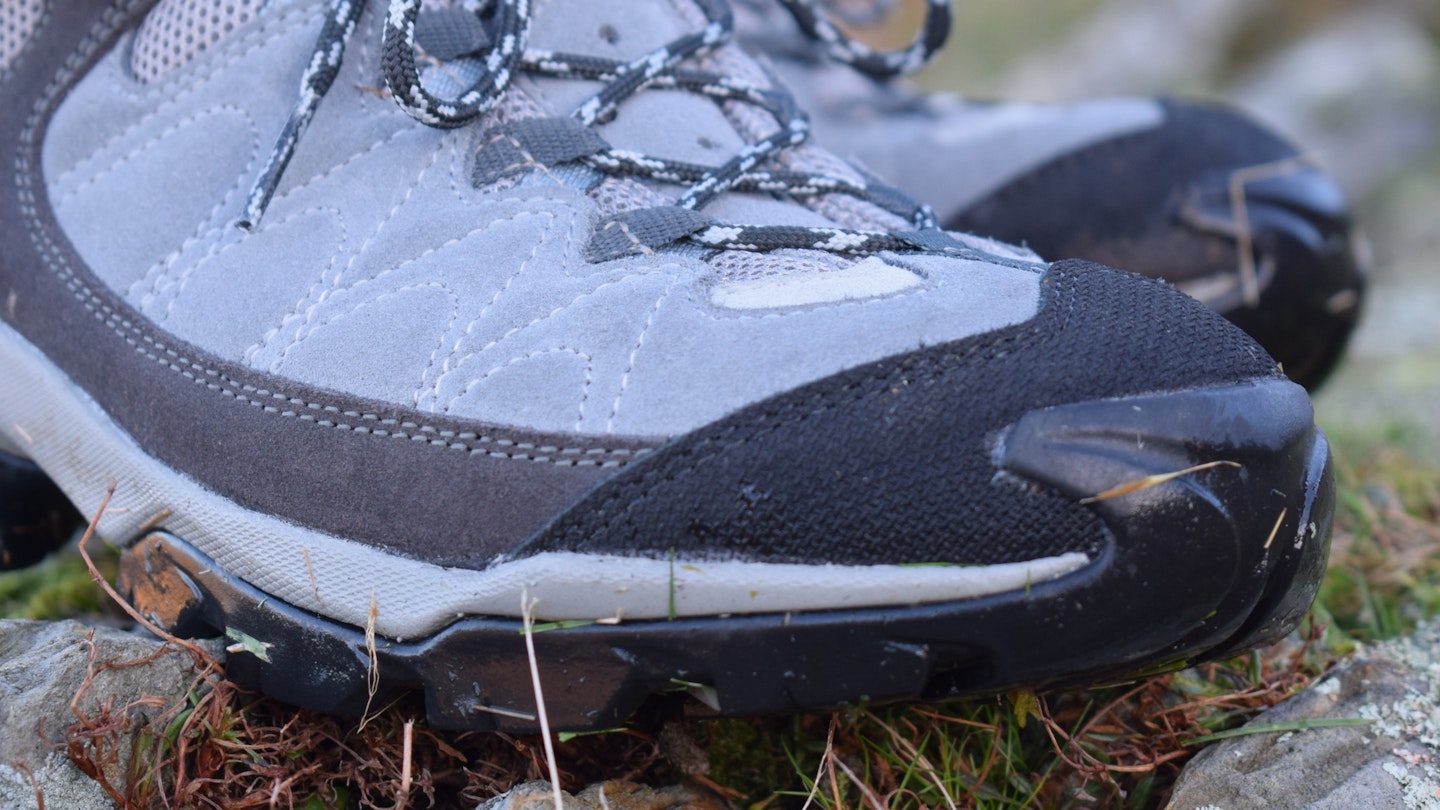
The upper of the Scarpa Vortex XCR GTX works well – it's nicely-designed with premium materials, and feels protective, robust and durable. The upper is made from a mix of fabric and suede, with Scarpa describing it as “lightweight but hard-wearing”.
Personally I’d say this approach is not lightweight, but instead prioritises durability and protection ahead of speed, comfort and lightness. As mentioned above, some will love this philosophy, others won’t.
You get a very hard and tough bumper at the toe and heel counter at the rear (tap your knuckles against these and you’ll encounter a rock solid, bombproof material), as well as a wraparound rand of thicker, more protective material. The upper itself is quite soft and supple, and there’s padding around the top of the ankle and tongue.
All in all, the upper does feel quite comfy by approach and walking shoe standards, but not that comfy by trainer standards. The fit feels true to size and the overall sensation is one of quite a foot-hugging, precise cut, which comes from the approach shoe style.
Midsole
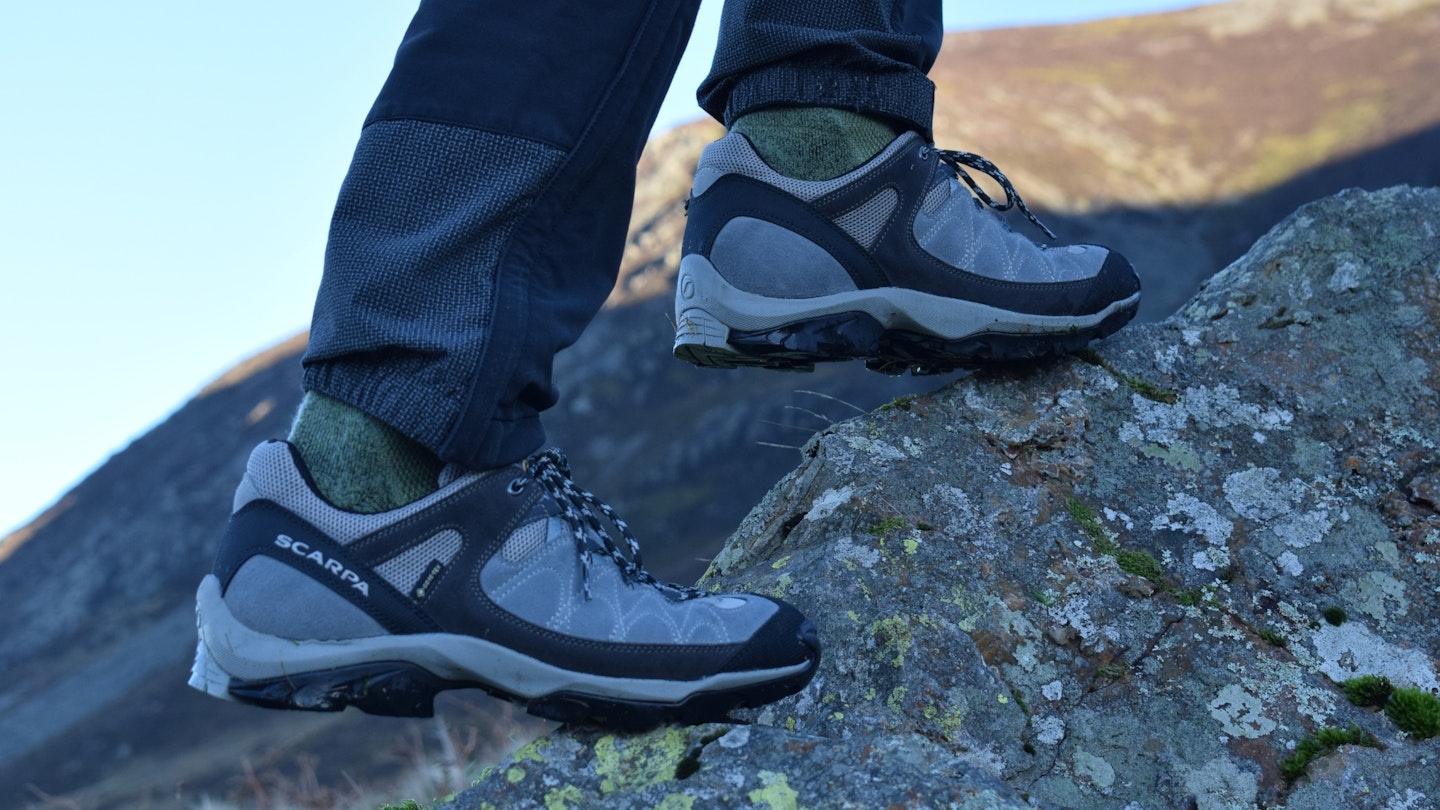
The midsole of a hiking shoe provides cushioning, support and protection between the foot and the ground, and it also determines the stiffness of the shoe.
In the Scarpa Vortex XCR GTX you a C-Flex midsole. Personally I’d describe this midsole as prioritising stiffness, support and protection over cushioning and comfort. It’s certainly not a mega-cushioned, maximalist, plush shoe with the bouncy, squidgy, energetic feel you get from some shoes such as Hoka hiking trainers or the Arc’teryx Norvan LD3.
Instead it feels sturdy and robust, with a rigid structure and more technicality than you’d perhaps expect. If you try and bend the shoe, pushing the toe toward the heel, there’s very little give (except a little flex at the forefoot), and the same goes for lateral movement.
Consequently the shoe works well on more technical, rocky ground in an approach shoe style, but it doesn’t feel fast, doesn’t give you good energy return with each step and doesn’t feel as comfy for mile after mile of long days on the trail.
As such, this is more of a shoe for day hikes, rather than multi-day thru-hiking, and it’s probably better suited to slow and steady mountain ascents rather than speedy peak-bagging missions.
Outsole
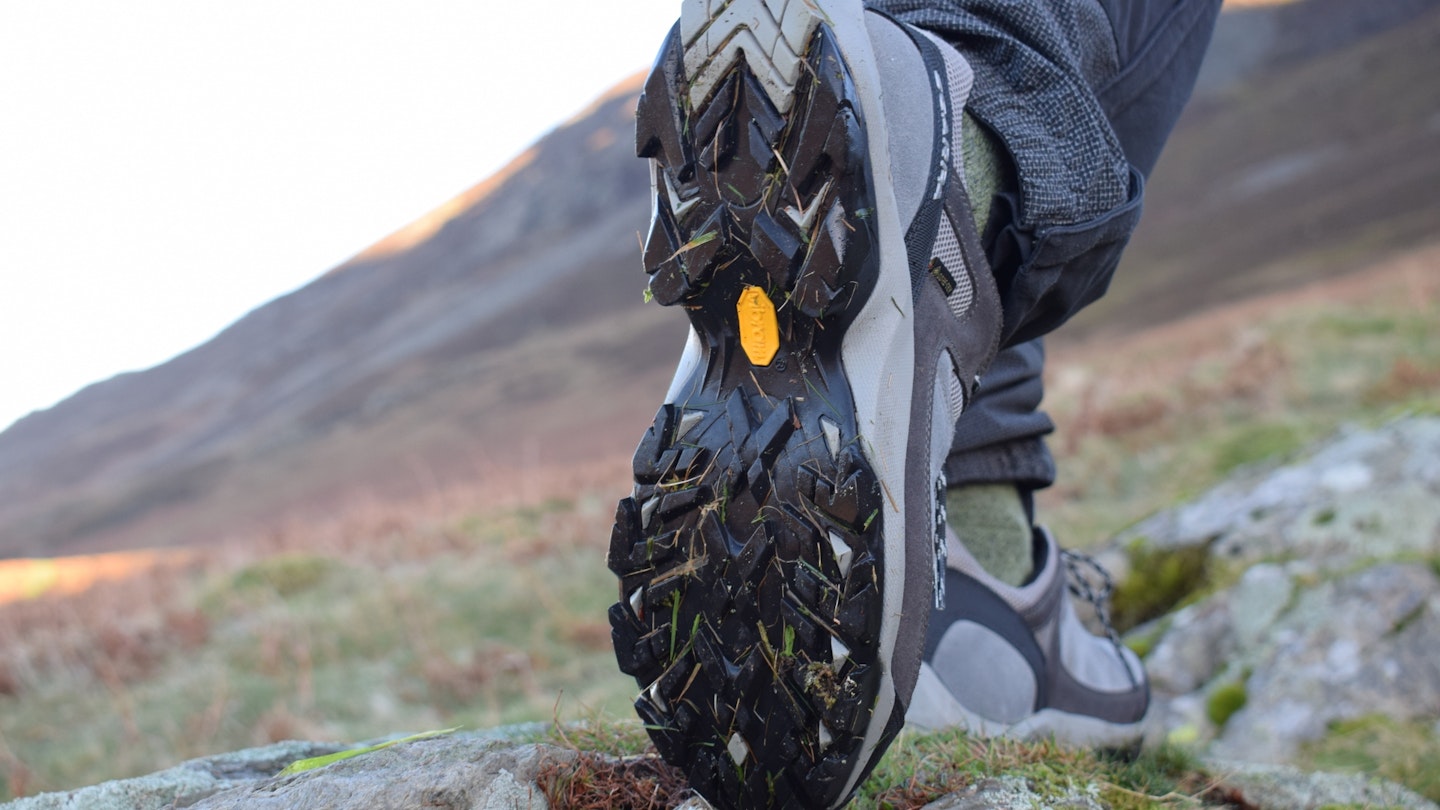
This is a definite strength of the Scarpa Vortex XCR GTX. I found the shoe’s outsole very grippy, with solid traction and bite across a mix of surfaces and terrain, and generally speaking it gave me confidence and reassurance in every step.
The outsole is a very chunky Vibram Dynatech unit, which is exclusive to this shoe model. It has a rather complex pattern of cleats and lugs, with a variety of diamond, chevron and X-shaped designs.
The lugs are deep(ish) and the shoe also has quite a substantial and prominent heel brake (a notch between the front and rear of the outsole) to help with downhill traction and foot placement when the terrain gradient changes.
Scarpa describe the outsole as “designed to give fantastic mechanical grip on loose surfaces and wet, British ground” while “the bonded and lasted construction helps add to the outright durability and strength” of the shoe.
Unlike many modern shoes, this sole unit can also be re-soled if and when required – a further testament to the Vortex’s old school vibes.
Features
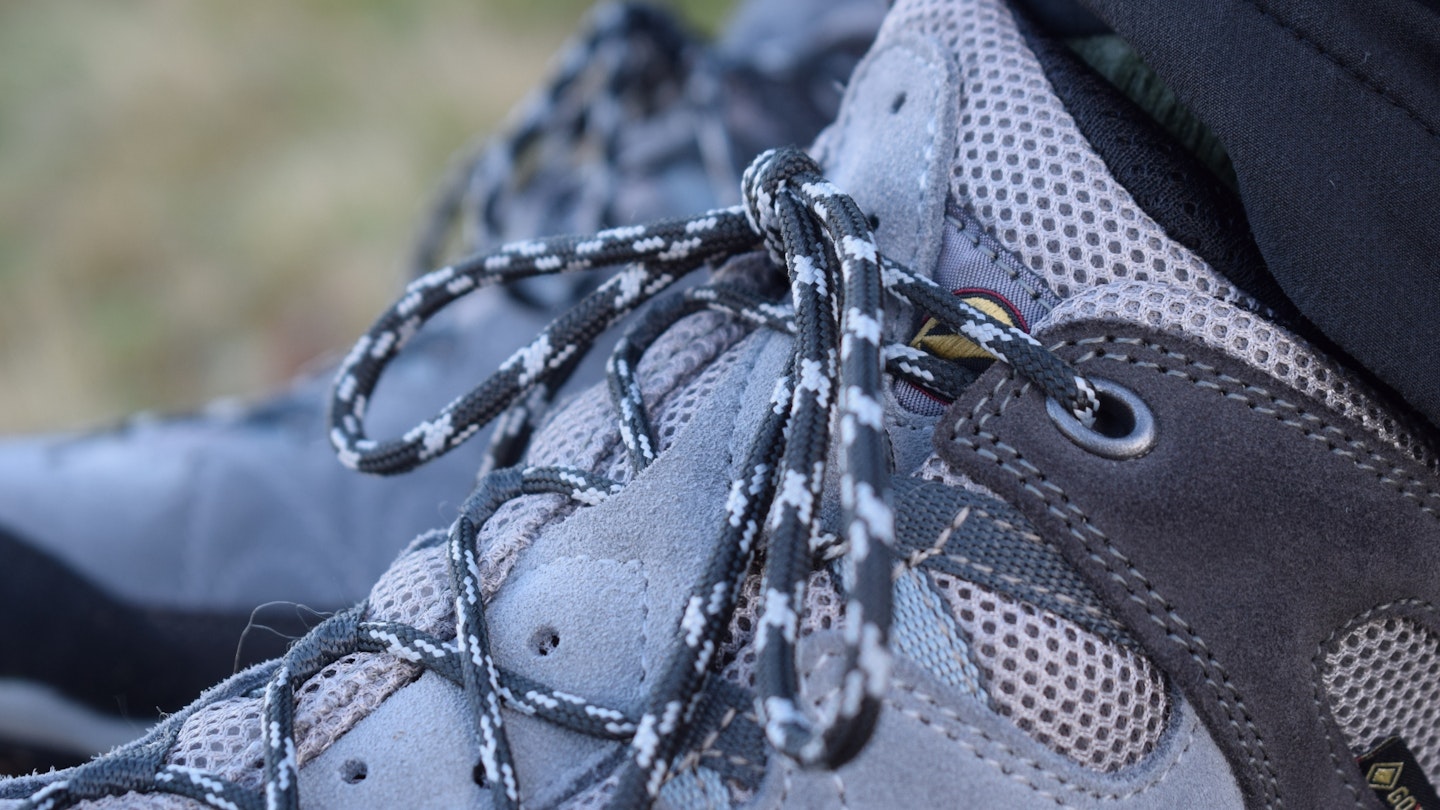
On top of the upper, midsole and outsole details outlined above, there aren’t many further features of the Scarpa Vortex XCR GTX to discuss.
The tongue has a gusseted design, with soft padding to enhance comfort against the top of your foot. The lacing has a climbing or approach shoe style, extending far down the shoe almost to the toe. The laces are secured within four fabric loops on each side and then a metal eyelet at the top.
This approach hugs the foot well and delivers a sensation that your foot is held in place securely and precisely.
Finally, the shoe has a Gore-Tex lining for waterproof-breathable protection. During my initial tests this kept my feet dry and didn’t fail, although – as always – more time is needed to analyse whether there is any drop-off in waterproofing performance over time.
It’s also worth noting that the 'flood level' of these shoes (the point at which water will flow over the lip of the shoe and into the shoe’s interior) is quite low, at about 10cm – so you need to be very careful not to sink your shoe into a big puddle or deep bog.
The type of Gore-Tex used in this shoe is called the Extended Comfort Range, hence the XCR in the product’s name.
Verdict
Tough, supportive and durable, this chunky shoe is a halfway house between a technical approach shoe and a regular walking shoe – but it’s heavy and expensive.
Shop this product
About the author

James Forrest writes regular features and route guides for Trail and has been one of our main gear testers for the last few years. James is based on the edge of the Lake District so when he isn’t off on his latest crazy adventure or challenge, he’s walking in his local fells.
Between 2017 and 2019 he climbed all 1,001 mountains in the UK and Ireland, covering over 5,000km, wild camping for 100 nights and climbing 30 times the height of Everest.







